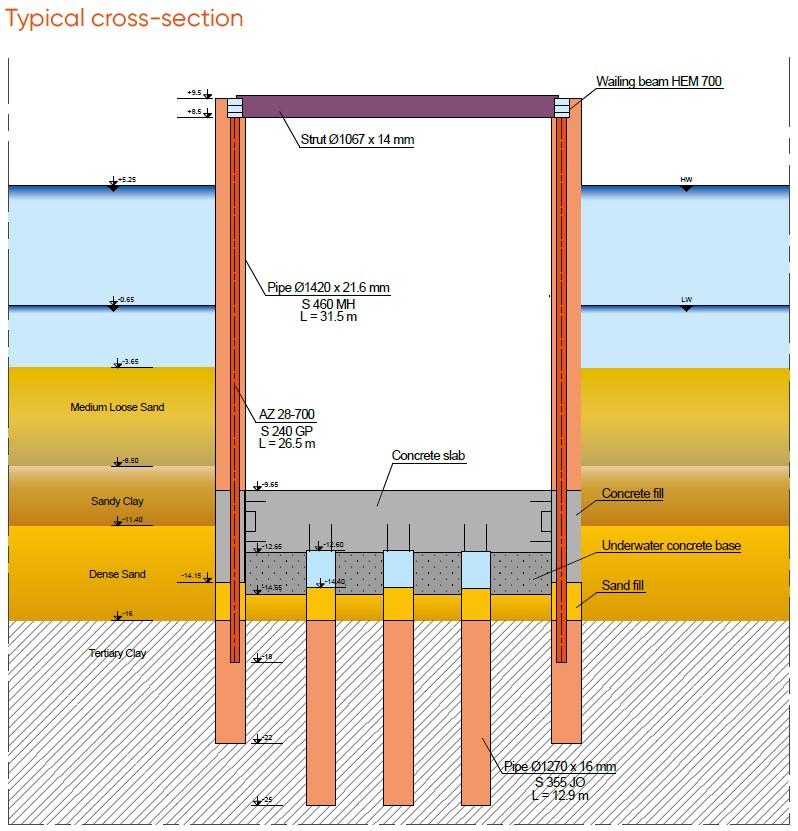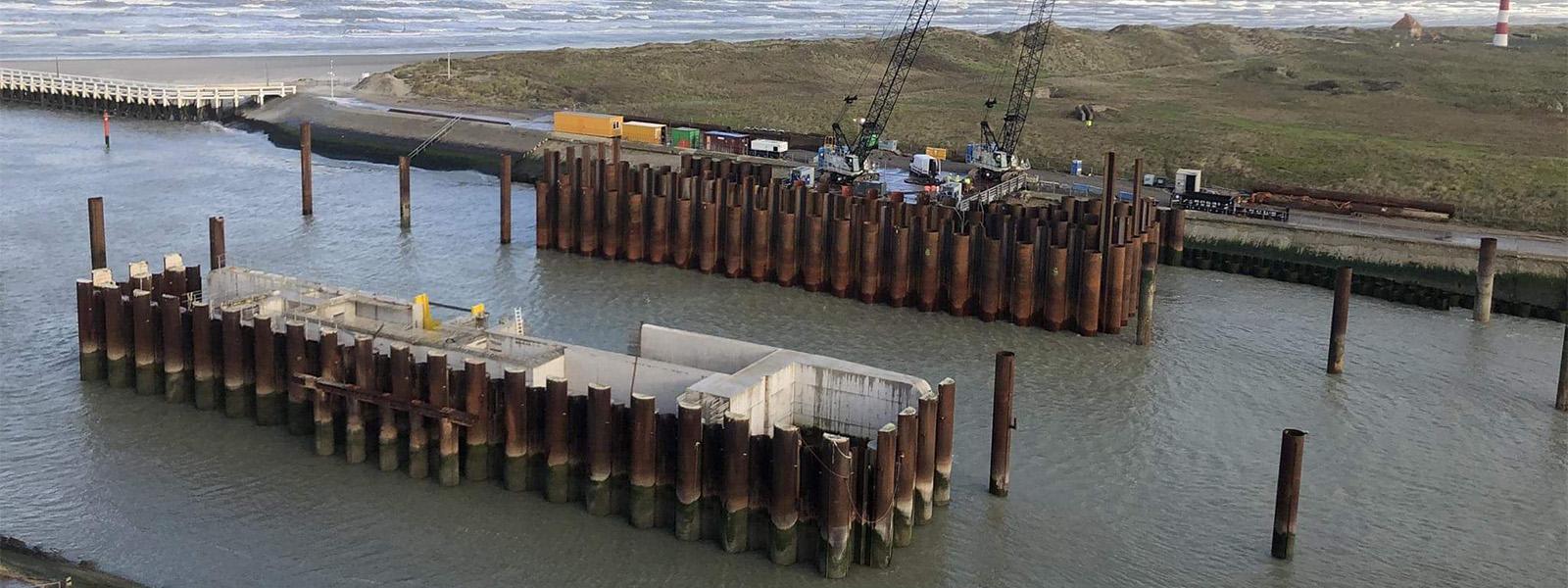
Hazard Protection Solutions
Maritime ports and Flood
658 tonnes of sheet piles
Storm surge barrier | Belgium
Download the full case study
The movable steel barrier is a construction that rotates around a horizontal axis. When parked, the barrier is sunk in a concrete sill at the bottom of the river Yser. The steel barrier rotates between two cast steel shafts which are anchored in concrete abutments connected to the banks of the Yser. At high tide, the water level reaches 5 meters above the average low water level (TAW). Combined with a heavy storm, on average twice a year, it can rise to more than 6 m TAW.
At that point, the storm surge barrier is rotated 90 degrees, closing off the access to the harbor. The barrier can even handle a rise of up to 8 meters, but that situation statistically occurs only once every thousand years. The design of the infrastructure considers a sea level rise of 80 cm by the year 2100.
For maintenance purposes, the barrier can be rotated 180 degrees into the horizontal maintenance position. Alongside the sector gates, large lateral ducts (bypass sewers) will be built in the abutments. These can handle additional flows, keeping the current velocity at spring tide below 3 knots and limiting the impact for recreational boating.
The two building pits for the abutments were made of combined walls. Each pit consisted of 53 tubular piles Ø1,420 x 21.6 mm in S 460 MH, 31.5 m long and infill sheet piles AZ 28-700 in S 240 GP, 26.5 m long. The tubular king piles were installed with a vibratory hammer PVE 2350 VM and driven to final elevation with an IHC Hydrohammer S150. Due to the high water pressure on the combined walls, the C6 interlocks of the tubes and the middle interlocks of the sheet piles were filled with sealant Beltan® Plus.

For each pit, 42 tubular foundation piles Ø 1,270 x 16 mm in S 355 J0, 12.9 m long were installed with an overlength of 8.6 m to drive them with a vibratory hammer, above the water level. They were driven 9 m into the tertiary clay, using a vibratory hammer PVE 250M.
The tubes were dredged and partly filled with concrete. On top of the combined wall, a strutting system was installed with Ø 1,067 x 14 mm tubes as compression struts and HEM700 waling beams.
After the dredging of the building pit, a 2 m thick layer of underwater concrete was poured. Subsequently, the pit could be drained to level -12.6 m TAW. The foundation piles were cut at level -12.6 m TAW and a concrete floor slab of 3 m thick was poured. The cut off piles were reused to fabricate the foundation piles of the second building pit.
In April 2022, the 4,500 t concrete sill was installed between both abutments.
Apart from the building pits, other steel combined walls, sheet pile walls and tubes were installed for the quay walls at both embankments, current conducting walls, a construction pit for the bypass sewers, an undercurrent screen, guiding walls and dolphins.
The project started in February 2018, and will be completed in 2025.



